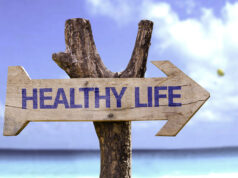 AAlcohol and drug addiction exist in every sector of American Jewry, but recovery specialists say it is part of a growing problem in the Orthodox community—a problem that, because of the pressures and particularities of an observant Jewish lifestyle, has hit the Orthodox community in different and sometimes more troubling ways than other segments of the Jewish community.
AAlcohol and drug addiction exist in every sector of American Jewry, but recovery specialists say it is part of a growing problem in the Orthodox community—a problem that, because of the pressures and particularities of an observant Jewish lifestyle, has hit the Orthodox community in different and sometimes more troubling ways than other segments of the Jewish community.
Part of the problem, experts say, is that for years people couldn’t and wouldn’t believe that drugs had found their way into Orthodox groups. But they had.
Experts say the emphasis in some fervently religious Orthodox communities on finding marriage matches for young people, coupled with the community’s traditional reluctance to air its dirty laundry, leads families and schools to cover up addictions. They call this “the shanda factor:” Who wants to marry a drug addict, or even a drug addict’s sibling?
As a result, addicts often don’t receive treatment until their addictions have reached crisis proportions. Those involved in treating these addicts say that, until recently, members of the Orthodox community received treatment on average two years later than addicts in society at large—two years during which their dependencies have time to grow, worsen and become harder to beat.
Solid numbers on addiction in the Orthodox community are hard to come by. In the past five to 10 years the community has begun to more aggressively and publicly address the issue, but it still elicits silence and shame. And evidence suggests the problem is getting worse.
Lou Jacobs, executive director of the Jewish Big Brothers Big Sisters League in Baltimore, which runs the city’s Jewish Addiction Services, says he believes nearly half the case load comes from the Orthodox community. That’s a “dramatic change” from just five years ago, he says, when Orthodox clients comprised 10% to 15% of his clientele.
“I would say there certainly is a sense that this is a problem that has gotten beyond one that can be dealt with quietly within the Orthodox community with its own resources,” Jacobs says.
Some describe a chicken-and-egg question: Is the number of Orthodox addicts growing, or—because community efforts have made treatment easier, more available or more acceptable—are a greater number of addicts seeking help?
Experts say both might be true.
“What has opened people’s eyes is that there has been much more talk about the problem,” says Rabbi Dr. Abraham Twerski, founder and medical director emeritus of Gateway Rehabilitation Center, a nonprofit drug and alcohol treatment system in western Pennsylvania. “Unfortunately there have been several young deaths from overdoses, and these were not covered up and they raised the alert of the community.”
Rabbi Kerry Olitzky, an expert in chemical addiction in the Jewish community notes that the Orthodox aren’t the only members of the Jewish community with addiction issues.
“Alcohol and drug abuse is about an issue of individuals feeling an emptiness inside of themselves and they’re self-medicating, trying to fill that hole and get rid of the pain they feel,” says Olitzky, who also is executive director of the Jewish Outreach Institute. “Alcohol and drug abuse, for similar reasons, impact upon members of the Jewish community from one side of the spectrum to the other.”
Recovery communities for Jews like those in Baltimore are few and far between, but many communities are making efforts to fight abuse by forming support groups, Alcoholics Anonymous and Narcotics Anonymous societies and treatment centers.
“The number of Jewish addicts is proportionally similar to the rest of America”, Olitzky says. Insiders say the Orthodox lifestyle offers another gateway into and cover for addiction: the frequent availability and consumption of alcohol at religious life-cycle events. Habits developed at these celebrations can eventually lead to alcoholism, and statistics show that individuals who abuse alcohol are more likely to use drugs.
A person can drink a l’chaim at a morning Brit ceremony, followed by another at an engagement party that evening. Later in the week there may be a wedding, followed by a sheva brachot ceremony followed on Shabbat by a Bar Mitzvah—and alcohol often is available at each event.
Observers say it has also becomes increasingly easy for kids to obtain drugs, even Orthodox kids.
“The problem in the yeshivahs is the same problem as in the public schools,” says Daniel Vitow, headmaster of the North Shore Hebrew Academy High School on New York’s Long Island. “Our kids live in the same society and the same culture as everyone else.”
Where the problem is more acute, some schools have instituted drug testing for students.
Some yeshivahs eventually expel problem students, who are sent from school to school to school, their problems left untreated, chalked up simply to hanging out with the wrong group of friends.
Vitow says the North Shore Hebrew Academy High School, which has no serious problem, offers information on drugs in health education classes, along with guest speakers and outside agencies that train students to talk intelligently about drugs with their colleagues in peer mentor groups.


